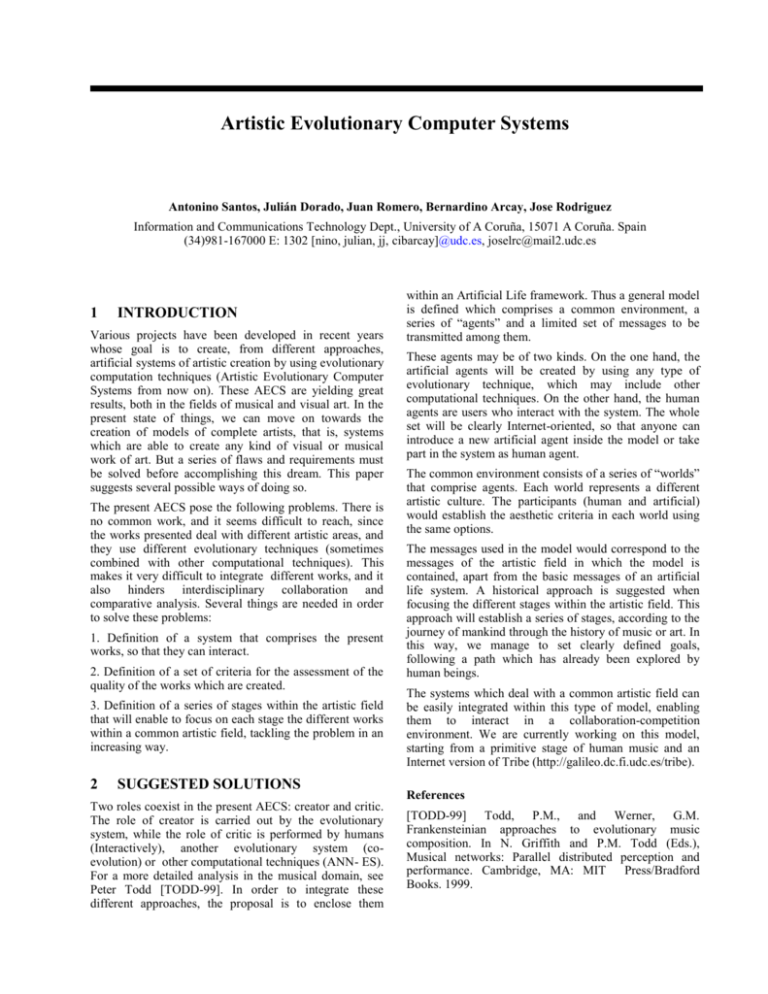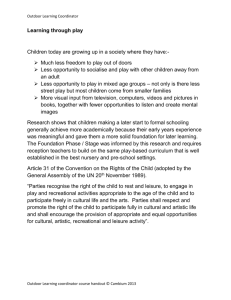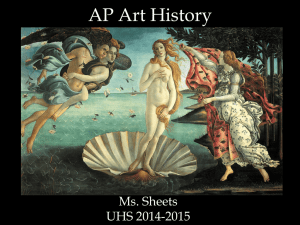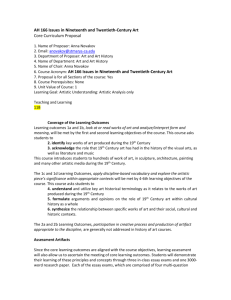WORD
advertisement

Artistic Evolutionary Computer Systems Antonino Santos, Julián Dorado, Juan Romero, Bernardino Arcay, Jose Rodriguez Information and Communications Technology Dept., University of A Coruña, 15071 A Coruña. Spain (34)981-167000 E: 1302 [nino, julian, jj, cibarcay]@udc.es, joselrc@mail2.udc.es 1 INTRODUCTION Various projects have been developed in recent years whose goal is to create, from different approaches, artificial systems of artistic creation by using evolutionary computation techniques (Artistic Evolutionary Computer Systems from now on). These AECS are yielding great results, both in the fields of musical and visual art. In the present state of things, we can move on towards the creation of models of complete artists, that is, systems which are able to create any kind of visual or musical work of art. But a series of flaws and requirements must be solved before accomplishing this dream. This paper suggests several possible ways of doing so. The present AECS pose the following problems. There is no common work, and it seems difficult to reach, since the works presented deal with different artistic areas, and they use different evolutionary techniques (sometimes combined with other computational techniques). This makes it very difficult to integrate different works, and it also hinders interdisciplinary collaboration and comparative analysis. Several things are needed in order to solve these problems: 1. Definition of a system that comprises the present works, so that they can interact. 2. Definition of a set of criteria for the assessment of the quality of the works which are created. 3. Definition of a series of stages within the artistic field that will enable to focus on each stage the different works within a common artistic field, tackling the problem in an increasing way. 2 SUGGESTED SOLUTIONS Two roles coexist in the present AECS: creator and critic. The role of creator is carried out by the evolutionary system, while the role of critic is performed by humans (Interactively), another evolutionary system (coevolution) or other computational techniques (ANN- ES). For a more detailed analysis in the musical domain, see Peter Todd [TODD-99]. In order to integrate these different approaches, the proposal is to enclose them within an Artificial Life framework. Thus a general model is defined which comprises a common environment, a series of “agents” and a limited set of messages to be transmitted among them. These agents may be of two kinds. On the one hand, the artificial agents will be created by using any type of evolutionary technique, which may include other computational techniques. On the other hand, the human agents are users who interact with the system. The whole set will be clearly Internet-oriented, so that anyone can introduce a new artificial agent inside the model or take part in the system as human agent. The common environment consists of a series of “worlds” that comprise agents. Each world represents a different artistic culture. The participants (human and artificial) would establish the aesthetic criteria in each world using the same options. The messages used in the model would correspond to the messages of the artistic field in which the model is contained, apart from the basic messages of an artificial life system. A historical approach is suggested when focusing the different stages within the artistic field. This approach will establish a series of stages, according to the journey of mankind through the history of music or art. In this way, we manage to set clearly defined goals, following a path which has already been explored by human beings. The systems which deal with a common artistic field can be easily integrated within this type of model, enabling them to interact in a collaboration-competition environment. We are currently working on this model, starting from a primitive stage of human music and an Internet version of Tribe (http://galileo.dc.fi.udc.es/tribe). References [TODD-99] Todd, P.M., and Werner, G.M. Frankensteinian approaches to evolutionary music composition. In N. Griffith and P.M. Todd (Eds.), Musical networks: Parallel distributed perception and performance. Cambridge, MA: MIT Press/Bradford Books. 1999. Acknowledgements This research was supported in part by grants from CICYT (TEL98-0291).






